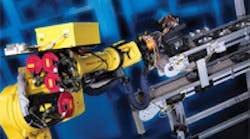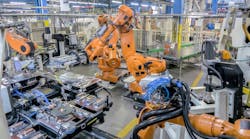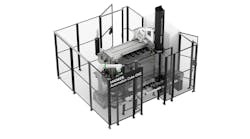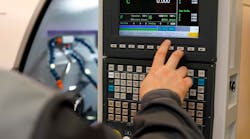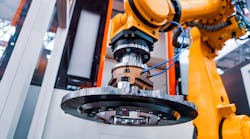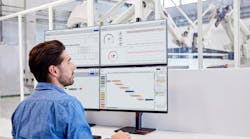Engineered Machine Products (EMP) got its first taste of the benefits of automation in 1999 and decided that it needed more.
Like most manufacturers today, Engineered Machine Products of Escanaba, Mich., a Tier One supplier to major diesel engine makers, faces serious challenges to produce highquality products and solutions for its customers, stay competitive and keep its operations in Escanaba.
To meet these challenges, the company purchased its first robot from Fanuc Robotics in Hoffman Estates, Ill. The cell serviced four CNC lathes.
Then, in 2000, Engineered Machine Products took a contract with a diesel engine maker to provide high-pressure fuel delivery rails. While focusing on its challenges, Engineered Machine Products called upon machine tool builder Makino (www.makino.com) and Fanuc Robotics America (www.fanucrobotics.com) to develop an automated high-volume machining system.
Producing such fuel-delivery rails is complex because the rails often require several machining processes to manufacture, and cycle times are extremely long for each process. The group determined that a multiple-robot system would not be an economical decision for this particular application. What worked was articulated gantry robots.
Two Fanuc M-710iT Toploader gantry robots, along with a variety of rail lengths, now service eight machine portals, some leading to several machining centers on a Makino MSC system.
The cell layout allows Engineered Machine Products to place the machines in close proximity to the robot rail, minimizing the traditional circle configuration with pedestalmount robots.
This two-robot line would have required more than four people per shift to handle the heavy parts, and would have caused ergonomic issues related to the repetitive loading and unloading motion. The 70-kg robots handle two parts simultaneously, and because each robot performs the same process and operates independently, Engineered Machine Products can shut down one side if necessary while maintaining production capabilities on the other side.
Compared with traditional linear gantry robots, Toploaders reduce floor space and ceiling height requirements. They also provide six-axis dexterity to perform value-added, post-processing operations such as degating, deflashing, labeling, quality assurance, packaging and palletizing.
During system operation, parts are loaded manually onto a conveyor that transports them into the cells.
Each robot services two operations per cell, Op10 and Op20. The robot removes two parts from the movable machine fixture on the Makino MSC system in Op20 and places them on a four-position, asynchronous pallet conveyor to be transported on to the post machining and cleaning processes.
The robot then removes two parts from the Op10 machine and places them on a re-grip station where the parts are turned over for machining in the Op20 machines.
Next, the robot loads the parts onto the Op20 machine fixture and returns to the in-feed conveyor. Lastly, the robot acquires two raw parts from the in-feed conveyor, loads the Op10 machine and the process is repeated.
The robot’s flexibility allows it to service any Op10 and/or Op20 combination in situations when a machine is undergoing service or tool changes.
Since the cell was installed, it has had a re-tooling to accommodate revisions to the fuel rail.
Because the system handles customer modifications easily, machining processes and automation changes were minimal and required only new machine fixtures and robot end-of-arm tooling.
Engineered Machine Products automated additional machining applications and now has 11 Toploader robots in operation. The company currently is the primary source for high-pressure fuel-delivery rails for two major diesel engine manufacturers.
In addition to machining operations using Toploader gantry robots, Engineered Machine Products has incorporated other types of Fanuc robots at its facility.
For example, the Fanuc R2000iA/165F robot is used in several smaller machining cells throughout Engineered Machine Products’ three factory locations in Indianapolis and Greenfield, Ind. and the one in Escanaba.
These smaller robot systems are economical and enable Engineered Machine Products to change product runs easily with minimal or no physical component changes.
Fanuc’s 2-D vision system combined with DTS America’s flatbelt conveyors allow for a variety of parts that fit within the parameter of the system to be conveyed into the cell and located by the vision system.
“Our visitors are amazed by the amount of automation we use on our production floor. We are as nimble and aggressive with our business as we can possibly be. As a lot of companies downsize and send their work overseas, it feels good to have a successful manufacturing operation here in Michigan,” Gabe Kluka, manufacturing manager at Engineered Machine Products, said.
He also said that a large part of the company’s automation has allowed it to employ over 160 new hires in the last year. That’s the reason that the company remains dedicated to driving automation to the furthest extent it can.
